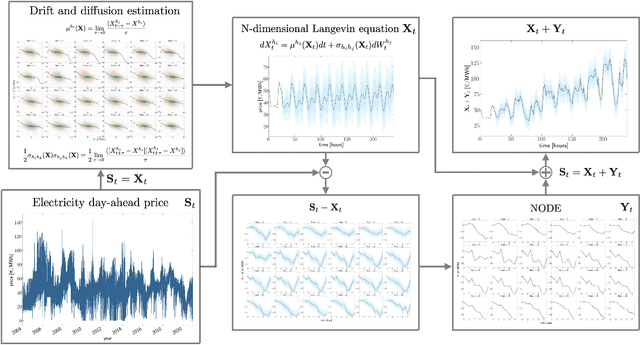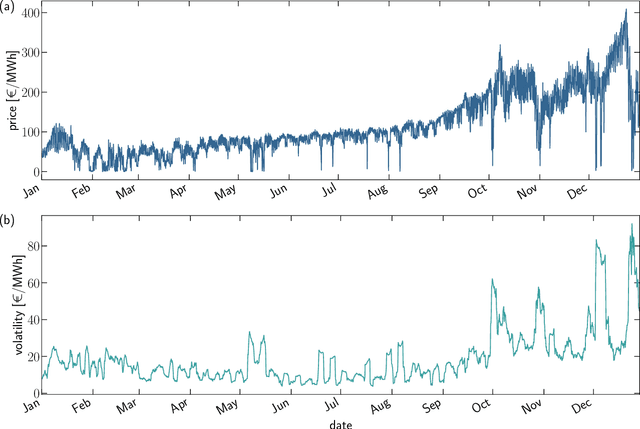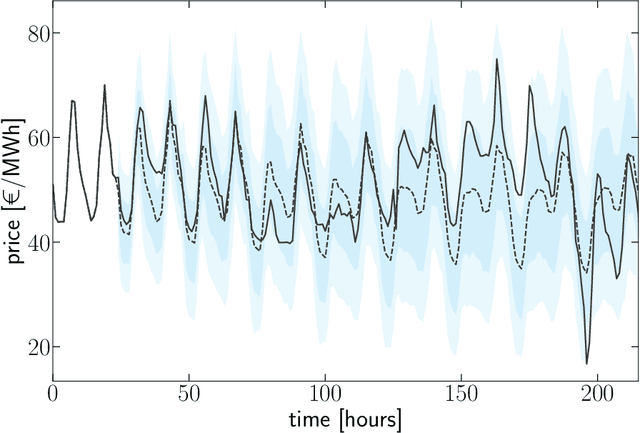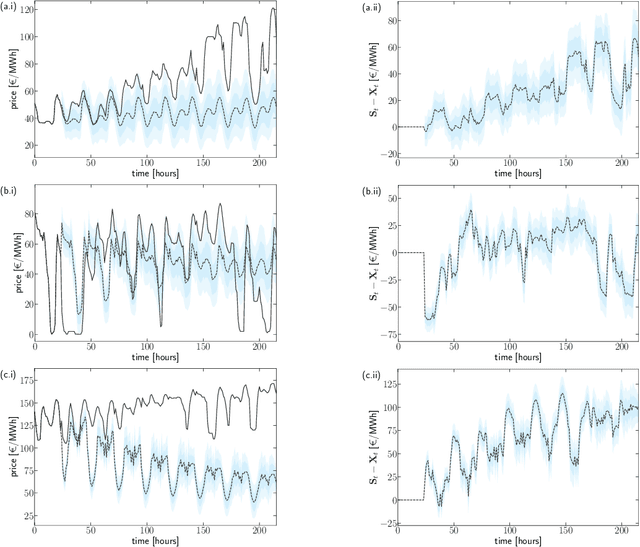Forecasting with an N-dimensional Langevin Equation and a Neural-Ordinary Differential Equation
Paper and Code
May 12, 2024



Accurate prediction of electricity day-ahead prices is essential in competitive electricity markets. Although stationary electricity-price forecasting techniques have received considerable attention, research on non-stationary methods is comparatively scarce, despite the common prevalence of non-stationary features in electricity markets. Specifically, existing non-stationary techniques will often aim to address individual non-stationary features in isolation, leaving aside the exploration of concurrent multiple non-stationary effects. Our overarching objective here is the formulation of a framework to systematically model and forecast non-stationary electricity-price time series, encompassing the broader scope of non-stationary behavior. For this purpose we develop a data-driven model that combines an N-dimensional Langevin equation (LE) with a neural-ordinary differential equation (NODE). The LE captures fine-grained details of the electricity-price behavior in stationary regimes but is inadequate for non-stationary conditions. To overcome this inherent limitation, we adopt a NODE approach to learn, and at the same time predict, the difference between the actual electricity-price time series and the simulated price trajectories generated by the LE. By learning this difference, the NODE reconstructs the non-stationary components of the time series that the LE is not able to capture. We exemplify the effectiveness of our framework using the Spanish electricity day-ahead market as a prototypical case study. Our findings reveal that the NODE nicely complements the LE, providing a comprehensive strategy to tackle both stationary and non-stationary electricity-price behavior. The framework's dependability and robustness is demonstrated through different non-stationary scenarios by comparing it against a range of basic naive methods.
 Add to Chrome
Add to Chrome Add to Firefox
Add to Firefox Add to Edge
Add to Edge